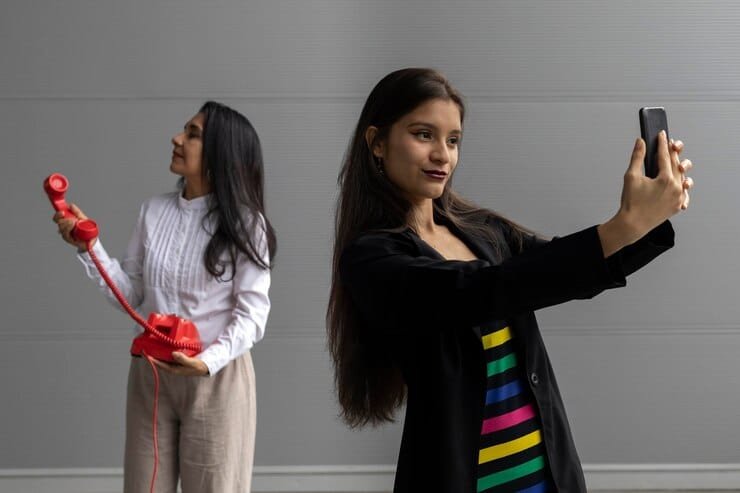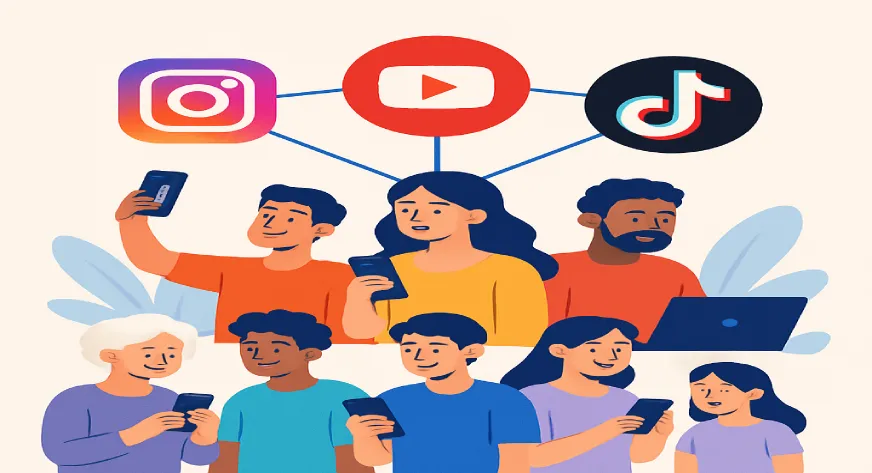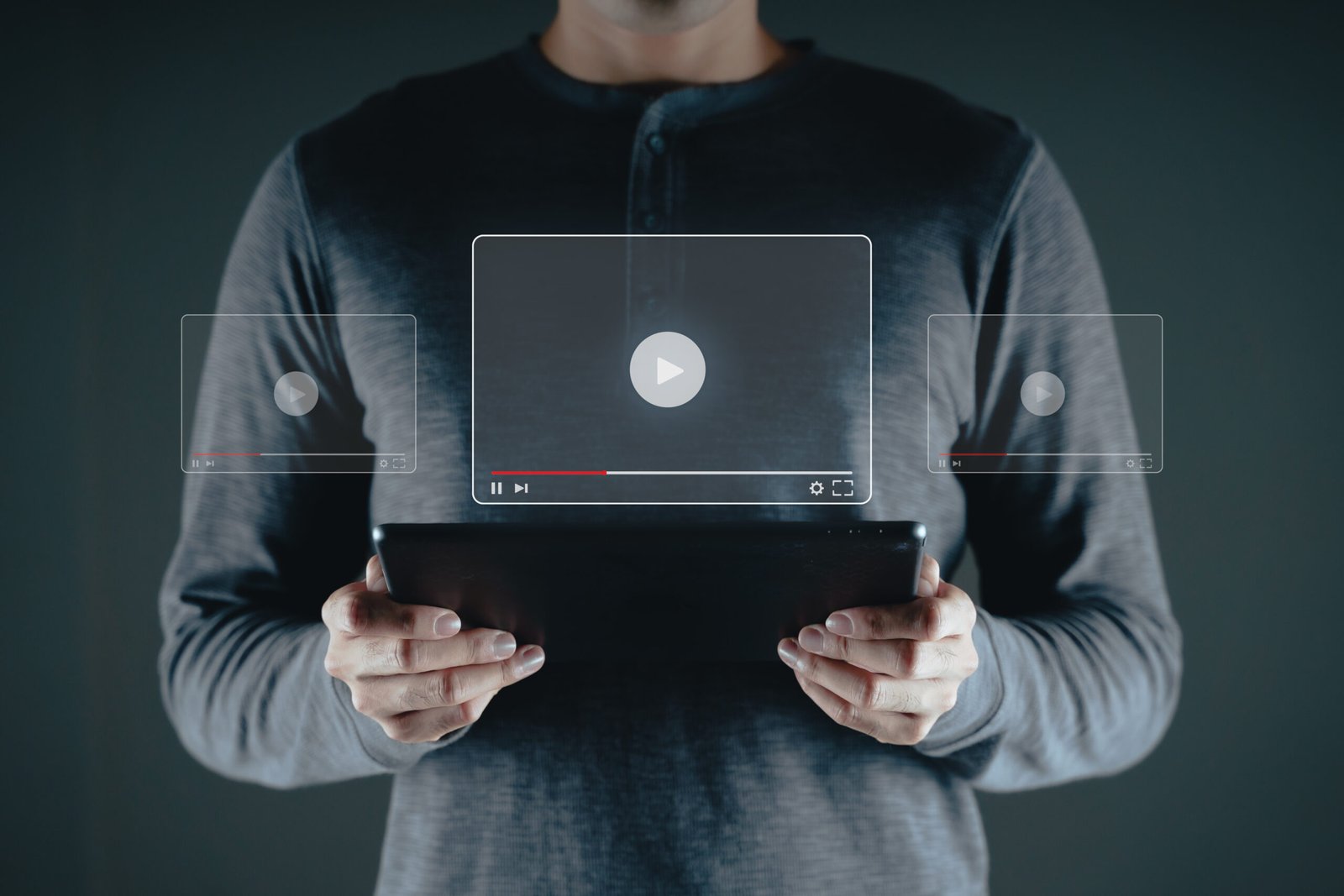Marketing has always been a cornerstone of business success, evolving significantly as technology and consumer behavior change. Today, a major debate in the marketing world centers around traditional marketing vs influencer marketing. As brands decide where to invest their budgets, understanding the strengths, weaknesses, and effectiveness of these two approaches is essential.

This blog explores the nuances of traditional marketing vs modern marketing, including how influencer marketing compares to other forms of modern marketing. Whether you are a marketer, business owner, or simply curious about marketing trends, this comprehensive analysis will help you decide which approach wins in today’s competitive landscape.
What Is Influencer Marketing?
Influencer marketing is a subset of digital marketing where brands collaborate with social media personalities or content creators to promote products or services. Influencers leverage their follower base and credibility to generate authentic engagement.
Unlike traditional marketing, influencer marketing is built on relationships, trust, and authenticity. It often takes place on platforms such as Instagram, YouTube, TikTok, and Twitch, reaching audiences where they spend most of their time.
Traditional Marketing vs Modern Marketing: Key Differences
To better understand traditional marketing vs influencer marketing, it’s important to also look at how traditional marketing stacks up against modern marketing as a whole.
1. Audience Reach and Targeting
Traditional marketing generally uses a broad approach, casting a wide net to reach as many people as possible. This can lead to wasted impressions on uninterested audiences.
Modern marketing, including influencer marketing, uses data-driven targeting to reach specific demographics, interests, and behaviors. This precision helps brands connect with consumers who are more likely to engage and convert.
2. Cost and ROI
Traditional marketing methods can be expensive due to production, placement, and distribution costs. Measuring ROI can also be challenging because tracking consumer responses isn’t always precise.
Influencer marketing often requires lower upfront costs and offers more measurable results through engagement metrics, traffic analytics, and sales tracking. However, influencer fees vary widely depending on the creator’s reach and influence.
Also, Read Benefits about the Influencer Marketing in 2025
3. Engagement and Interaction
Traditional marketing is mostly one-way communication. Brands deliver messages, but consumer interaction is limited.
Influencer marketing is highly interactive. Audiences can comment, share, and ask questions, creating a two-way conversation that fosters community and trust.
4. Authenticity and Trust
Consumers today value authenticity, and influencer marketing thrives on personal connections. Influencers’ recommendations often feel genuine compared to traditional ads, which can be perceived as overly promotional.
Traditional marketing can struggle to build trust in the same way, especially with younger audiences who tend to distrust commercials and prefer peer recommendations.
Influencer Marketing vs Modern Marketing
While influencer marketing is a key part of modern marketing, it is not the only method. Modern marketing also includes content marketing, search engine optimization (SEO), pay-per-click (PPC) advertising, email marketing, and social media advertising beyond influencer collaborations.
Compared to other modern marketing strategies, influencer marketing stands out due to its ability to humanize brands through real people and stories. It creates emotional connections and often leads to higher engagement rates.
However, influencer marketing requires careful management to avoid challenges like fraud, compliance issues, and authenticity concerns.

When Does Traditional Marketing Win?
Despite the rise of influencer marketing, traditional marketing still holds significant advantages in certain situations.
- Mass Audience Campaigns: For products or services with a broad market, traditional channels like TV or radio can generate large-scale awareness quickly.
- Local Marketing: Traditional media such as local newspapers, flyers, or outdoor billboards remain effective for hyper-local campaigns.
- Brand Credibility: Established brands often use traditional marketing to reinforce their reputation and reach audiences less active online.
- Long-Term Brand Building: Traditional marketing contributes to building brand equity over time through repeated exposure.
When Does Influencer Marketing Win?
Influencer marketing shines in many contexts, especially where authenticity and engagement are key.
- Niche Targeting: Brands can reach specific communities by partnering with influencers who cater to particular interests or demographics.
- New Product Launches: Influencers help generate buzz and social proof quickly among target audiences.
- Digital-First Brands: E-commerce, beauty, fitness, and lifestyle brands benefit greatly from influencer collaborations.
- Engaging Younger Audiences: Millennials and Gen Z prefer influencer content over traditional ads, making this channel vital for reaching these groups.
Combining Both Approaches for Maximum Impact
The debate between traditional marketing vs influencer marketing does not have to be an either-or situation. Many successful brands integrate both strategies to maximize reach and engagement.
For example, a brand might use TV commercials to build mass awareness while simultaneously running influencer campaigns to drive engagement and conversions online. This integrated approach leverages the strengths of both traditional and modern marketing.
The Future of Marketing: Evolving Trends
Marketing continues to evolve as consumer habits shift and technology advances. Hybrid strategies blending traditional principles with digital innovations will dominate.
Influencer marketing is expected to grow further, especially with the rise of micro and nano influencers who offer highly engaged niche audiences at lower costs. Meanwhile, traditional marketing is adapting with digital integrations such as programmatic TV ads and interactive print media.
Understanding the ongoing conversation between traditional marketing vs modern marketing is crucial for marketers to stay ahead.
Conclusion
The answer depends on your business goals, target audience, budget, and industry.
- Traditional marketing offers broad reach, brand credibility, and established channels but can be expensive and less targeted.
- Influencer marketing provides authentic engagement, precise targeting, and measurable results but requires careful management and strategy.
For many brands, the best approach is a blend of both, capitalizing on the wide reach of traditional marketing and the personalized touch of influencer marketing.
By analyzing your unique needs and market environment, you can craft a marketing strategy that combines the best of both worlds for maximum success.
Frequently Asked Questions
Q1: What is the main difference between traditional marketing and influencer marketing?
Traditional marketing uses mass media channels like TV, radio, and print to reach broad audiences, while influencer marketing leverages social media personalities to promote products through more targeted, authentic engagement.
Q2: Is influencer marketing more cost-effective than traditional marketing?
Generally, yes. Influencer marketing often requires lower production and distribution costs and provides more measurable ROI, especially for niche or digital-first brands.
Q3: Can traditional and influencer marketing work together in a campaign?
Absolutely. Many brands successfully combine both strategies to maximize brand awareness and consumer engagement, using traditional media for reach and influencer content for credibility and connection.
Q4: When should a brand choose traditional marketing over influencer marketing?
Traditional marketing is ideal for campaigns targeting mass audiences, reinforcing brand reputation, or conducting hyper-local outreach through TV, billboards, or print ads.








